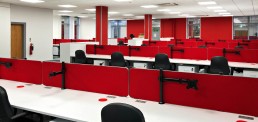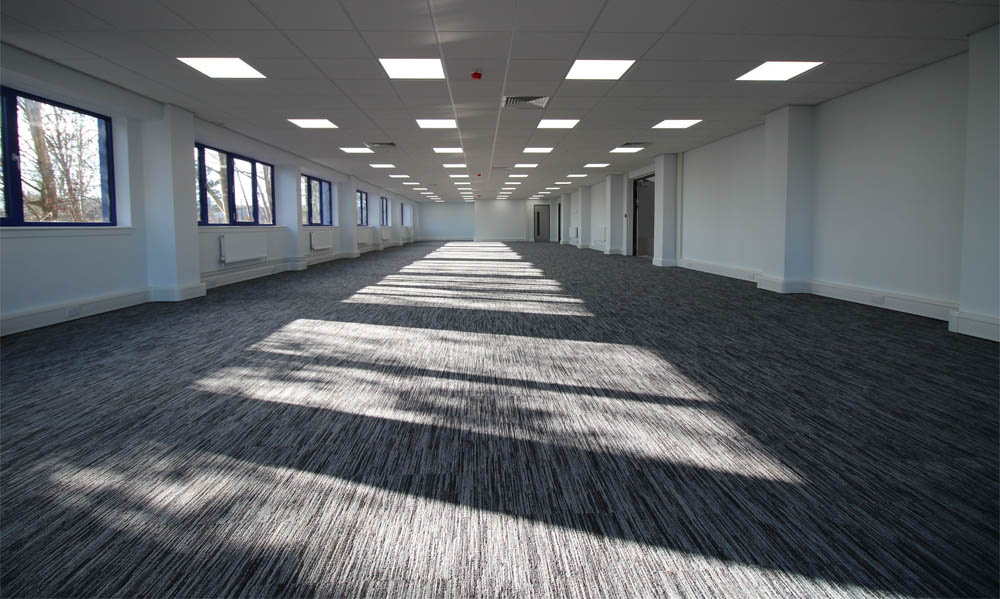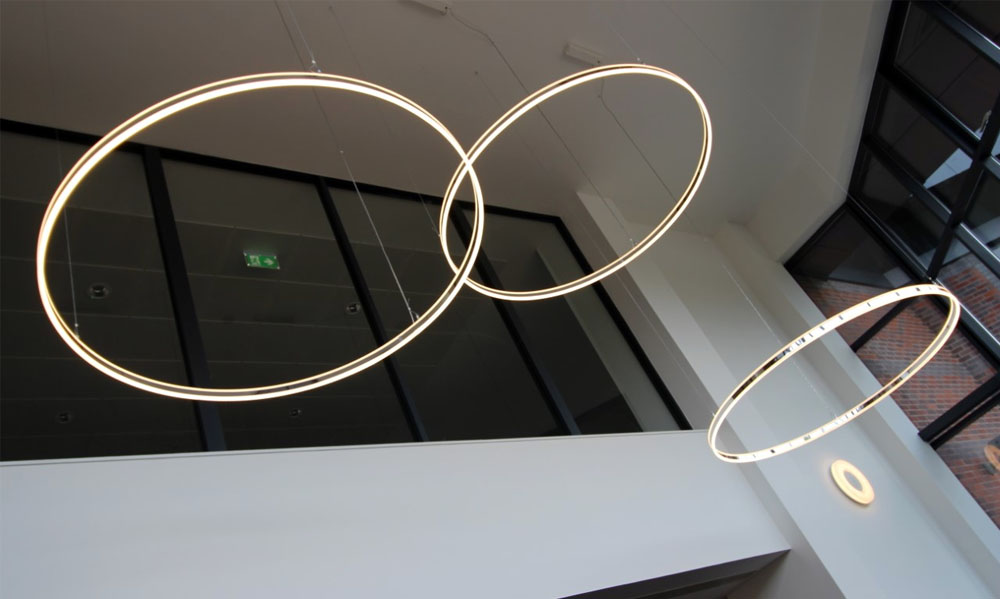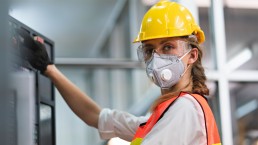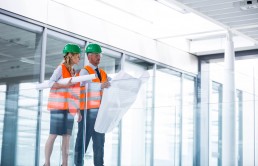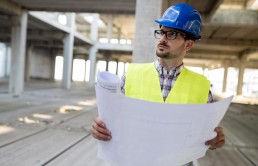Job Vacancy - Assistant Project Manager
Job Vacancy - Assistant Project Manager
Assistant Project Manager
Job details
Salary: £22,000 – £27,000 a year
Job type: Full-time – Monday to Friday
Description
Reporting to a Director, the Trainee/Assistant Project Manager will be offering support in overseeing projects of varying
values and diverse natures. This will be mainly refurbishment and fit outs to Offices, Education, Warehousing and
Residential for values between £5,000 and £5m.
The primary role of the Trainee/Assistant Project Manager will be to assist the office based Director in ensuring that the
allocated project runs efficiently and profitably ensuring full compliance to Health & Safety legislation and contract
conditions. Work is completed to a high standard, in a safe working manner, within programme and to the total satisfaction
of our client(s).
Main Duties & Responsibilities
Assisting and learning all aspects of the role of the office/site based Director in their responsibilities and for the day-to-day
running of the project.
- Supporting and monitoring Health & Safety practices and CDM Regulations on site.
- Attendance of regular site meetings with client, Architect, Quantity Surveyor, Planning Supervisor etc.
- Assisting and learning the preparation of reports, programmes, progress and profitability reports.
- Assisting with and learning how to agree pricing and instructions with the client or client’s agent.
- Contribute to formulating valuations and final accounts.
- Assisting with the preparation of tenders.
- To procure, negotiate terms and monitor the performance of sub-contractors and suppliers.
- To identify and implement improvements to any aspect of the service provided.
- Procurement of new clients and suppliers.
- Ensure that acceptable levels of customer care are provided and often exceeded at all times.
- Produce relevant monthly reports for the Director e.g. cost and value comparisons, turnover forecasts etc. ensuring
information is complete and accurate. - Contribute to and attend financial and progress meetings with the client, engineers and subcontractors as required.
- Provide support to the site team in order to optimise the use of contract resources.
- Provide support for the Director in terms of data input etc.
- Maintaining deadlines in line with requirements.
- To provide cover for other associated staff during times of absence.
- Regular use of the computer systems and other software packages such as Word, Excel and Project.
Duties and responsibilities will vary in line with progress and training levels.
This is a full time position and hours of work will be 42 hours per week: 08:45hrs to 17:15hrs Monday – Friday
This will also involve daily travel and working away as deemed necessary for the needs of the business.
We undertake contracts and projects for varied companies that require our employees to undertake various clearances along with an Enhanced Disclosure & Barring Service clearance.
Essential Requirements
- Currently studying towards or completed a Degree in Construction (or equivalent) or a construction related qualification
- GCSE or equivalent Grade C or above in English Language, Literacy, Numeracy and ICT
- Willingness to undertake training programmes as deemed necessary by the Company
- Competent in the use of a range of IT packages
- Self-motivated and proactive
- Positive attitude and the ability to integrate and be an active part in the team
- Good organisational skills and the ability to prioritise to meet deadlines
- Keen to pursue personal development needs and maintain up to date knowledge
- You must hold a full current UK driving licence and have had 6 months driving experience since passing your test and live
within an hour of the WR9 9BT area.
Desirable Requirements
Currently working within the construction environment
- CSCS Card
- IOSH Managing/Working Safely or Site Management/Supervisor Safety Training Scheme
- First Aid at Work Certificate
- Assistant PM Role April 2023 Page 1 of 2
- Personal Competencies
- Able to adapt communication skills to maintain and manage a variety of situations.
- Plan and prioritise personal objectives along with the Company’s priorities.
- Understand the needs of the Company, client and colleagues and responds appropriately to required needs.
- Make well informed, effective and timely decisions even when faced with unpleasant consequences and perceived impact
these decisions has on others. - Encourage others to develop themselves and act as a role model.
- Ability to adapt to a changing environment.
- Positive attitude and the ability to integrate and be an active part in the team.
- Encourages and develops ideas and innovations for current or new situations.
- Commercial awareness and understanding of the Construction process.
- Remains resilient when under pressure and encourages optimism.
- Aware of own impact on others and takes peoples’ feelings and needs into consideration.
Benefits
- Vehicle allowance
- Mobile phone and laptop
- 21 days holiday plus all bank holidays
- Continuous training and development
- Excellent opportunities for career progression
- Private health care awarded after 1 years continuous service
Job Type: Full-time
Salary: £22,000.00-£27,000.00 per year
Schedule:
- Monday to Friday
Supplemental pay types:
Bonus scheme
- Experience: Management / Office Environment: 1 year (preferred)
- Work Location: In person (UK wide)
14 Essential Tips Prior to Appointing a Fitout Contractor
14 Essential Tips prior to appointing a Fitout contractor
The list of considerations when relocating or expanding your existing office space can seem a daunting task for any company, no matter the economic sector. A chance to re-evaluate the company’s new look, maximise team performance and maintain a positive and sustainable future. Follow these tips and deliver the seamless office fitout.
#1 – Team
Step one is to ensure the correct stakeholders are identified, a person with overall responsibility to make decisions, allowing the project to move forward with ease, focusing on the best interests of project delivery.
Further into the process, team appointments may be necessary depending on project size and complexity.
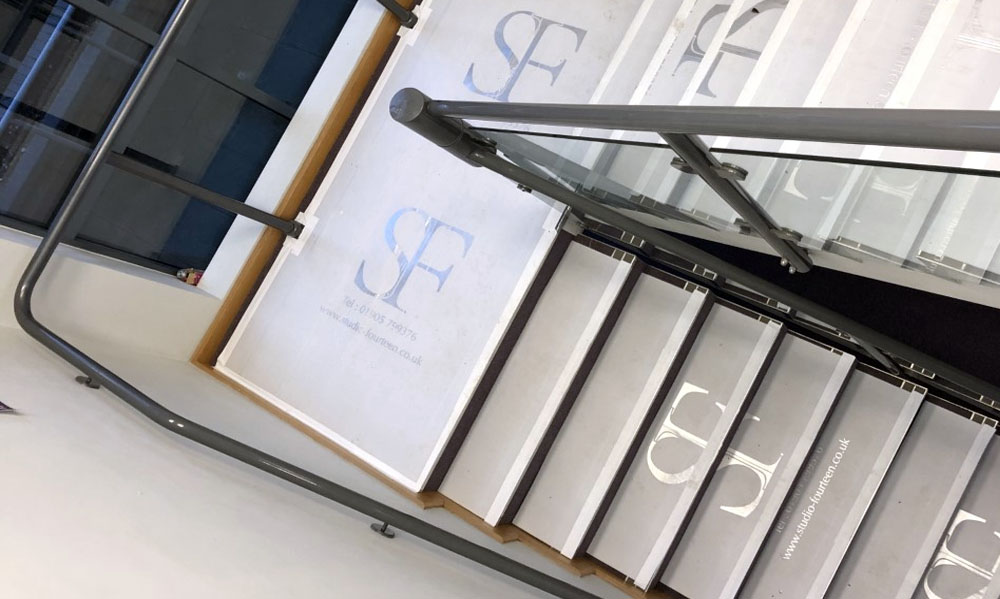 #2 – Budget
#2 – Budget
Setting a realistic and achievable budget is primary consideration, ensuring design and project team costs are considered, not forgetting the 5-10% contingency figure for unplanned eventualities, particularly when refurbishing an existing office space. Work out respective costs of each category Shell & Core fitout/Category A/Category B as a comparison.
#3 – Location
Is your existing office space suitable size for expansion? Staff commutes sensible? Transport links? Client proximity considered? Building condition and appearance? Location is everything for a successful business operation no matter the sector. Budget may also tie into location considerations, as office rental costs vary considerably to location.
#4 – Draft Layout
Closely linked to location is layout, initial key processes, staff areas, welfare and storage must be identified to establish the required floor areas and thus correct infrastructure, for example a calculation often utilised is 1 person per 10m2 floor space.
#5 – Agent Appointment
Locating the office space is often a difficult task in itself, appointing the correct office agent can provide you many options logistically, rental cost, location and assist with achieving a great overall deal, let’s not forget the financial commitment to take on office space is usually long-term. A well-considered deal may release additional funds into the fit-out build costs.
#6 – Consultant Appointment
Consideration must be given to the mechanical and electrical infrastructure in each and every fitout, no matter the project size. Consultants are often key members of the delivery team on large scale office fitouts. Make the appointment if necessary.
#7 – Design Brief
At this point set out your vision, goals, branding, themes, style and any other considerations. The introduction of an interior designer will greatly assist at this point to bring all ideas together – not forgetting the company processes behind the vision.
#8 – Staff Opinions
Increase morale, a feeling of value in the business, take on constructive staff opinions which will add value to the project, carefully considering how best to approach the correct forum moving forwards.
#9 – Initial Layout
The production of initial layouts on plan, specific to building(s) identified previously, will see the scheme come to life, converting the list of requirements to an initial space plan, allowing the office layouts to be yet further considered in respect of team numbers and areas, inter-department communication, proximity of central services and building regulation compliance.
#10 – Revisit Team
The project information flow and decision making will now be increasing considerably, at which point specialist input may be required from internal staff to correctly assess and include the infrastructure into the design, for example IT, Branding, HR and Marketing.
#11 – Design Development
Now all stakeholder, staff, departmental and consultant team considerations have been collated, the interior designer will revisit the design, revising and coordinating accordingly, introducing fixed layouts, colour schemes, drilling down into the day-to-day tasks to ensure the space works on a practical level and budgets maintained.
#12 – Contractor Appointment
Selecting the right contractor is just as important as the process preceding this, an experienced, approachable and flexible fit-out contractor will deliver the site construction works efficiently and safely.
The Design/Consultant team may continue forwards to the construction stage or allow a competent contractor to deliver from hereon.
#13 – People
A successful working relationship is about people, sharing a common goal and enjoying the project delivery, be sure to allow this key consideration is not lost, as the project duration is on average 8-12 weeks.
#14 – Communication
A successful project cannot be delivered without clear and open communication for the duration of construction works and also following completion, it is as much about including internal stakeholders as well as dazzling the world externally.
Please feel free to contact Studio Fourteen if we can assist you with your next office move and providing advice to help you along the way.
Covid 19 Safety
COVID 19 SAFETY STATEMENT
The situation with coronavirus COVID-19 is changing daily. But ,even in the face of all the uncertainty, there are steps we can take to ensure the continuity and usual high level of service. As always we will continue to be as accommodating as possible and aim to offer our full level of assistance, albeit over different method of communication, for now at least.
Remote Meetings
Admittedly you can’t beat a good old fashioned face-to-face meeting, however we fully understand the need and wish to avoid face-to-face meetings where possible, which gives rise to the video conferencing facilities such as Zoom, Cisco Webex, GoToMeeting and many more.
Travel
Consideration must be given ahead of time to travel arrangements and forward planning on any journey and meeting, on occasion meetings in person will be required, particularly to assess new buildings and ensure existing projects are delivered to our high standards.
Prior to any face-to-face meeting we will issue our Covid-19 meeting check list to ensure all parties are safe and appropriate to meet, for example, showing any symptoms, vulnerable persons within the property etc. This effectively is our risk assessment to ensure the safety of all.
Staff & Family
Working within both residential properties and commercial properties alike, we are faced with differing situations, scales of site (space) and number of people potentially in any one area at a time. We take social distancing very seriously and ensure the safety and wellbeing of our clients, staff, workforce and extended families.
Project Sites
Our site works are now slowly returning, with safety measures in place, the latest site operating procedures from the Construction Leadership Council providing confidence in our approach. Please appreciate works may now extend from what we considered normal durations and lead-time previously, to account for the fewer trades on-site at any one time and potentially longer lead-times for deliveries of stock items and further increased timescales for bespoke items as sub-contactors and manufacturers implement there own safe procures.
Communication
Good communication is essential to every aspect of our business, Covid-19 and the restrictions placed upon us all will not alter our approach. We will continue at all times to update you every step of the way, be it a new residential design scheme, construction phase works or follow up queries and information following handover. We are always at the end of the phone or email, however you prefer.
Rest assured we will continue to seek guidance from The Construction Leadership Council and the HSE amongst others, to ensure the safe delivery of our projects.
Please feel free to contact us if you have any queries in relation to how we approach any aspect design and project delivery, always happy to help.
Dominic & Claire
Studio Fourteen Interiors
Office Dilapidations
Office Dilapidations
Office Dilapidations is often a term misunderstood and used too late in the process when dealing with commercial properties. We at Studio Fourteen want to explain this term and clear all the jargon now before you start your next project.
In brief, the term Office Dilapidations is used to describe a legal obligation of the tenant leasing a commercial or office space to maintain, repair and return the condition of the property back to the original condition when the contract was first agreed between the tenant and landlord. The tenant has obligations to the upkeep of their leased property.
Firstly, taking legal advice prior to engaging in a commercial lease is recommended, as Dilapidations costs can be substantial sums if not understood upfront and how best to approach the inevitable cost from day one within the leasehold.
The official Dilapidations process will commence when the lease is towards the end of term, with the landlord commissioned surveyor inspecting the office/home and issuing a Schedule of Dilapidations, identifying any issues apparent with the property.
Upon receipt of the Schedule of Office Dilapidations, Three options normally exist. 1 – Contest the contents of the schedule. 2 – Undertake the works whilst in occupation of the property. 3 – Agree a financial settlement to cover the cost of repairs after the duration period has ended.
Taking a step-back, option 1 above is perfectly reasonable providing prior to the lease agreement a survey of the property was carried out by a qualified surveyor producing a Schedule of Condition. This can form part of the legal agreement between parties to document the condition of the place prior to taking on the lease, a great reference back in time when considering Dilapidations items.
Option 2 is quite often the most advantageous financially to the tenant, controlling costs and time frame, although it is important to ensure the Schedule of the office Dilapidations is correctly understood and actioned accordingly.
Option 3 a simple option for those wishing the vacate the space without undertaking any works, leaving the landlord to address the issues following tenancy agreement.
On occasion, the Cat-B fitout completed by the tenant may be considered an improvement to the property, the landlord accepting reduced costs from the tenant or even on occasion foregoing any costs as the property may be drastically altered following the lease end.
Cat-B Office Fitout – What is it?
Cat-B Office Fitout
All industries and professions have specific terms and language which is often overlooked outside of the particular industry, making it difficult to understand the detail. Office interiors and the wider construction sector is no different, here at Studio Fourteen we want to break it down and explain some of the phrases we use on a regular basis to make sure you know what services you want and need for your business, the term we will be looking at is Cat-B office fitout.
If you’re looking to move into a new office or you’re doing a refurbishment to your existing space, you may feel slightly exhausted with the jargon that we take for granted in the world of commercial construction. We at Studio Fourteen are here to decode the jargon so that you can understand exactly what’s going on with your project, and make sure you know exactly what you’re getting.
The big question we get asked a lot in our industry is what is a fit out? A fit out is process of making an internal space suitable for occupation. It’s the transformation of a shell into a working space; from installing facilities, applying new flooring, creating working spaces and developing rooms with a purpose.
For end users and occupiers, a Cat-B commercial office fitout is generally the most common type of fitout terminology used to explain the full client specific design and layout. To rewind slightly, a Cat-A office fitout is normally completed by the landlord providing a basic finished open plan office space containing mechanical & electrical infrastructure complete with suspended ceilings, decoration, raised access floors and often carpet.
The occupier will then take on this blank canvas and develop the design tailored to the business operation intended for the space. At this point consideration is given to the components of a Cat-B office fitout but also the practically and day-to-day use of the operation, with a good design making the office space as efficient and effective as possible for all concerned.
The components of a Cat-B office fitout are subject to the occupiers brief and business type, however will contain elements including:-
- Partitions (forming Reception Areas, Meeting Rooms, Teapoint, Stores)
- Feature Ceilings
- Doors
- Bespoke Joinery
- Teapoints
- Mechanical & Electrical alterations
- Branding
- Furniture
- Data, Telecoms & WiFi
- FFE (fixtures, fittings and equipment)
This list is not exhaustive, the scope for office design moves on changing yearly with advancements in technology and communication. Perhaps introduce a staff slide within your next office design, its not as unusual as you may think!
To find out more information on this topic or Cat-B office fitouts, please visit our portfolio pages or contact us with any questions, we will be more than happy to help, in the meantime head over to our LinkedIn where we would be happy to answer any questions you might have.
Office Fit Out Guide
Office fit Out Guide
Here’s our office fit out checklist and tips
Fit outs can be a challenge, so we’ve compiled a checklist and office fit out guide to make the process as smooth and effective as possible. The list of considerations when relocating or expanding your existing office space can seem a daunting task for any company, no matter the economic sector. A chance to re-evaluate the companies new look, maximise team performance and maintain a positive and sustainable future. by following this office fit out guide you increase the chances of delivering a seamless office fit-out.
#1 – Team
Number one in our office fit out guide is and always should be – the team. In our experience, the smoothest projects are those where companies appoint single person of responsibility who can stay in touch with the contractor. However, it’s essential that behind that person is a strong team of individuals with expertise in your company’s key departments including IT, Finance, Marketing and Branding. A successful project cannot be delivered without clear and open communication for the duration of construction works – and also following completion.
#2 – Budget
Setting a realistic and achievable budget is a primary consideration, ensuring the design and project team costs are considered, not forgetting the 5-10% contingency figure for unplanned eventualities, particularly when refurbishing an existing office space. Workout the respective costs of each fit out category including Shell & Core fit out/Category A/Category B as a comparison.
#3 – Location
Is your existing office space of a suitable size for expansion? Are staff commutes sensible? What about transport links? And, don’t forget to consider client proximity? Then there are building conditions and appearance? These are essentials when fitting out a new office.
Location is everything for a successful business operation no matter the sector. Budget may also tie into location considerations, as office rental costs vary considerably from location to location.
#4 – Staff Opinions
Ask staff for their views on the current layout. Is it working effectively for them each day? Are there improvements, dislikes or things they may particularly like about the existing layout? By doing this and involving your staff it can increase morale and feelings of being valued by the business. After all – the company is the people within it.
#5 – Assess How the Space is used
Assess your current layout and calculate if the workspace is suitable for each employee? Are meeting rooms unused or not large enough? What about storage rooms overflowing or, for that matter, no longer required in our paperless future? Have you considered reducing the size of server rooms by switching over to the cloud?
#6 – Technology
One of the most important points in our office fitout guide is the need for technology. Consideration should be afforded to the infrastructure behind the layout. The improvement in wireless technology may allow more flexible working space whereas security and privacy may require fixed data points, cat5, cat6 or POE (power over ethernet)? Don’t forget data connects the majority of office devices, including even door access, fire alarms, TV’s and projectors.
#7 – Storage Needs
This is the opportunity to assess your company’s storage requirements by looking at Individuals, teams and archives. This is something often not given due consideration and forms a fundamental part of the design. Consider off-site storage for archiving as a better way of using the office space efficiently.
#8 – Future Growth
Plan ahead for growth by making sure not only staff numbers are considered but technology too. Office technology is both expanding or contracting – depending on the industry. In your case it may be that expansion is inevitable which may make the decision of increasing the infrastructure more cost effective and less disruptive now than in the near future.
#9 – Layout
Discussion of open plan vs. cellular is always critical. Open plan may be great for communication but not great for privacy. Ask yourself if a private area is required and consider the introduction of booths or a larger number of meeting rooms? Equally, do you have more team meetings and need touchdown areas. A balance of cellular offices, touchdown and bench seating may be the option?
#10 – Branding
Is your brand the main focal point? Create instant impact through the strong use of corporate identity displayed in reception areas. With other manifestations consider using subtle hints of branding and logo colours integrated into and flowing through the design. Your brand colours, if used in the correct manner, can increase recognition without the use of a logo.
#11 – Design Brief
Answering all of the above questions will help you arrive at a design brief tailored to your specific requirements and this then can be used as a basis to pull a scheme and layout together to put forward for tender / enquiries with contractors.
#12 – Contractor Appointment
Selecting the right contractor is just as important as the process of deciding what you want from your new offices. An experienced, approachable and flexible fit-out contractor will deliver the site construction works efficiently and safely. By using a contractor with design capability the brief can be developed from initial meetings, through site surveys and communication and finalised for the construction phase.
#13 – Staff Wellbeing
Within the design development stage staff wellbeing must be considered and integrated into the design. Are all your facilities sufficient for the number of employees now and into the future? Are there any special provisions you must make for disabled access or comfort?
#14 – Legal Compliance
Do you know the legal requirements of your fit out? Compliance with building regulations is fundamental. CDM (Construction Design Management) Requirements must be satisfied for example, is an Asbestos survey required? Also, please consider planning permissions for external equipment and signage?
We hope that you have found this office fit out guide and checklist useful. If all the above points have been considered and evaluated, we believe you’re on the right track for a smooth office fit out and a practical and desirable office space – for years to come.


